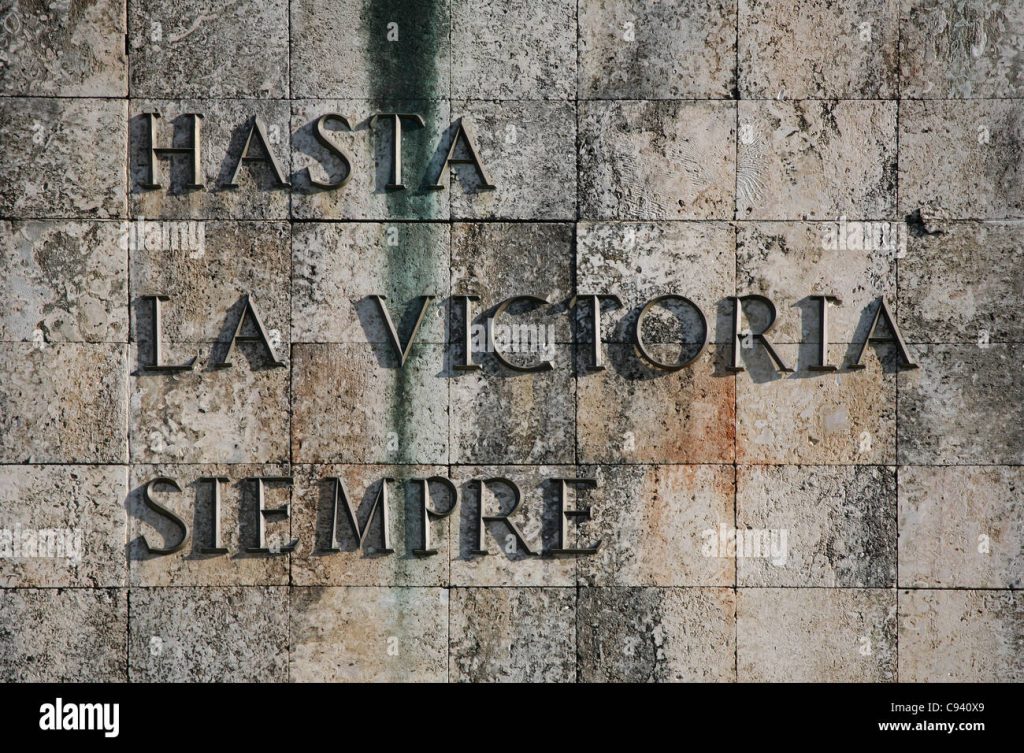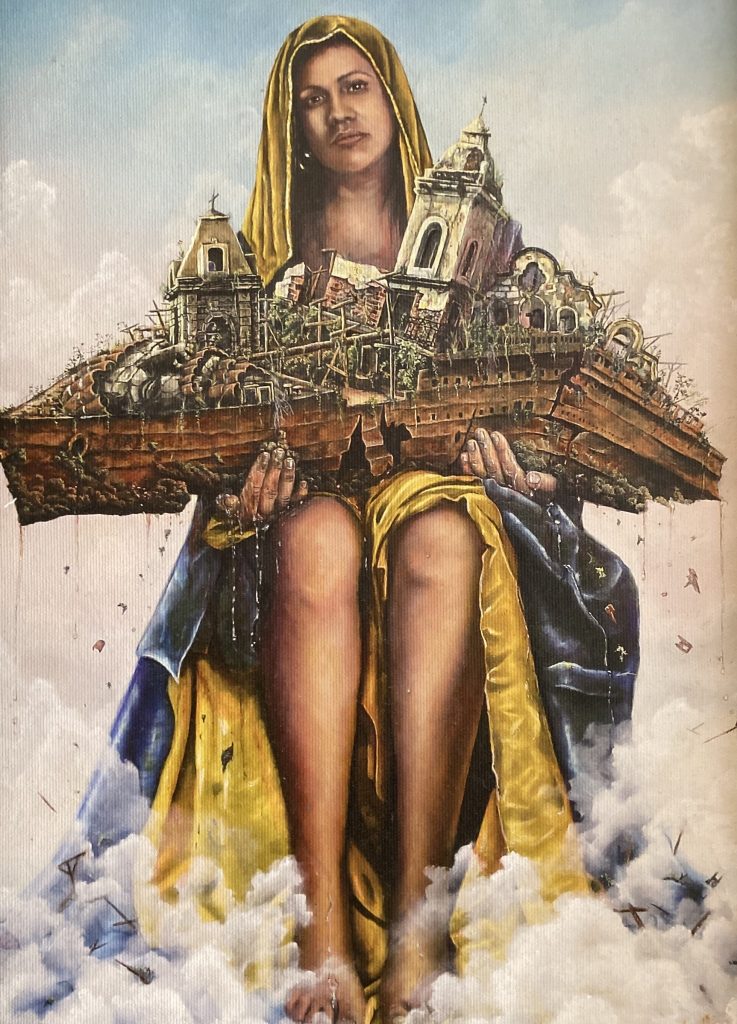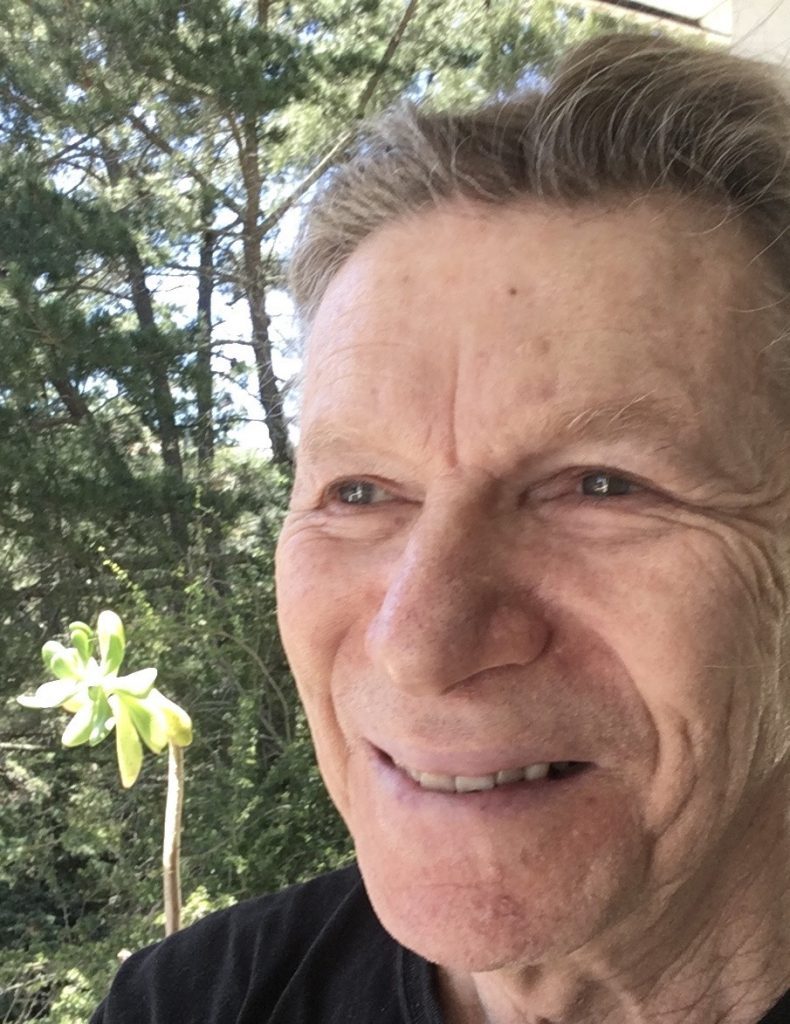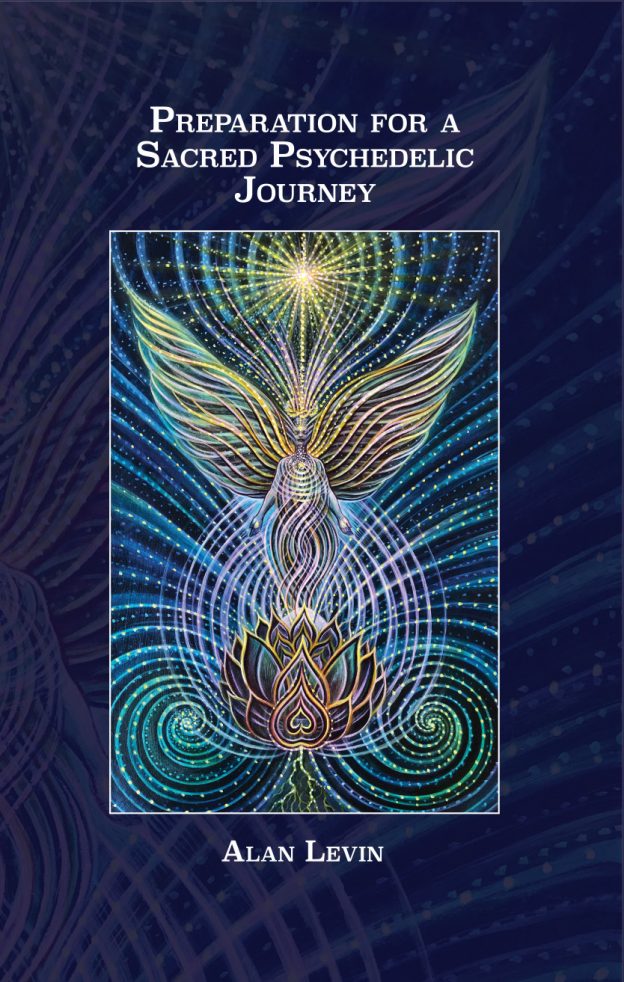“The world is new to us every morning –
this is God’s gift: and EVERY man should believe he is reborn each day.”
–the Baal Shem Tov (primary founder of Hasidism)
“You cannot continue to victimize someone else
just because you yourself were a victim once – there has to be a limit.”
–Edward Said (Palestinian author and activist)
Hasidimism, Israelism, and Antisemitism
Disclaimer: These are quite controversial issues. I am writing from my observations and informed opinions. I am not a professional scholar or researcher in any of these fields. I ask only that you see if any of it resonates with your own thoughts and feelings.
Two of the words in the title are invented, one by me. They obviously have to do with two topics, two very thorny discussion topics: the communities of people known as Hasidic, and the nation-state of Israel. I use the term “thorny” because discussing either of them almost always involves fear of being stung by accusations of antisemitism or possibly contributing to already existing antisemitism in the larger community. My intention in writing this is to help those struggling with the issues, who have strong feelings about them, but are afraid and inhibited about communicating, especially with Jewish people. My hope is to contribute to a freer and more helpful dialogue and positive actions.
First a bit about what I mean by “isms.”
Growing up in a religious or a secular-ideological family is growing up immersed in an ism. That is, there’s a set of ideas or myths that define what is heroic or cowardly, what your relation to God or higher ideals entails, and how to answer the basic questions of life: who your people are, who or what you are, and what you are here to do. These myths or belief systems deeply saturate your consciousness affecting all thoughts, feelings and visceral inclinations on subjects that touch on the ism identity. Folks with strong ism identities tend to see the world in us/them ways, “you’re one of us, or not,” “you get it, or you don’t.” Criticism from within the group has to fall within a certain boundary of acceptability, criticism from outside the group tends to be seen as hostile and threatening. People outside the ism group tend to sense the boundary that encloses the group and individuals in it.
Anti-SemitISM
Unfortunately, this is an ism that has captured most of humanity, especially in that part of humanity that has been influenced by Christianism (a subject for another time). Over the past two millennia, generation after generation, so much hatred has poured forth, so much degrading judgement has been heaped on “the Jews,” that it’s difficult for anyone to have escaped feeling or believing that some of it is true. With so much smoke, there must be fire somewhere. So some of what is actually the dark projection of the shadow of humanity – the ego’s essential greediness and selfishness – must be the actual nature of the Jews. “Smart as they may be, they’re only out for themselves.”
Volumes of books and articles have been written by scholars about antisemitism, its roots and complex manifestations. What I’m referring to here is the subjective mindset that demonizes the essential character of Jewish people, and the actions that stem from that mindset. It has fulfilled the need for a scapegoat in many parts of the world over the centuries. This has resulted in separation, ghettoization and pogroms, culminating in the Holocaust. Until recently, the stereotypes of Jews became almost universally accepted even by the intelligentsia throughout Europe and its extensions. In the U.S., Jews were excluded from many predominantly White associations and public accommodations up until the 1950’s when I was a child. I recall going on trips to Miami and my dad telling me certain hotels didn’t allow Jews (or Colored or dogs).
While expressions of anti-Semitic ideas and discrimination against Jewish people have been largely eliminated from public view in the U.S., they are far from gone.
On a website comment discussion that had complaints about a business (that was owned by Jews), someone wrote, ”Anything Jews get into, money, publishing, movie industry, becomes crooked because they are crooked by nature.” Another said, “Time after time, nation after nation, generation after generation, they are stealers.”
In recent times, especially in the Trump era, openly racist and antisemitic language and violence have escalated, coming out of the closet of the subjective experience of individuals and routinely expressed on social media and through acts of harassment and violence. We’ve all heard the haunting chant of the White Supremacists marching in Charlottesville chanting “Jews will not replace us.”
I think it’s important to acknowledge that antisemitic tropes are like destructive memes – thoughts that spread like contagious viruses. They exist on a continuum of intensity in just about everyone, Jewish people included. As with racism, patriarchy, classism, etc., even the victims have been subjected to the conditioning. Being free of it starts with being aware of it. Anti-racist activists and teachers are often wrongly criticized for attempting to tell liberal white people that they still have internalized racism. And for educating people of color as to how their internalized racism works against themselves. Isms become invisible prisons of the mind.
The Russian spiritual teacher, Gurdjieff said, “You are in prison. If you wish to get out of prison, the first thing you must do is realize that you are in prison. If you think you are free, you can’t escape.”
All that said, it’s important to acknowledge that dramatic progress has been made, especially in the U.S. and Europe. Most Jews have fully assimilated and been accepted into all areas of society and have leadership roles throughout. Jews have positions of power and influence seemingly at odds with the fact that they are 2.4% of the adult U.S. population and .2% of the world. (Yes, 2.4 and .2 – hard to believe). What’s troubling is that in the two areas of focus in this writing, the communities of the Hasidim and Israel, there are serious concerns about how that power and influence is being abused.
HasidimISM
I am a firm supporter of the freedom of religion. Hasidism is an essentially mystical, Jewish spiritual transmission with a lineage extending back several centuries. It contains some of the most precious and deepest teachings of the Jewish religion. It was a liberating force in the Jewish world, offering Jews that were not steeped in the scholarly study of Jewish law an opportunity to experience a joyful and mystical form of spirituality with a loving embrace of the natural world.
But as with Evangelical, fundamentalist Christianity, the organized institutions that evolved to represent the teachings of the pioneers of this tradition rigidified the practices and created hierarchies of power, and we have what we have today. There is the Hasidim and several offshoots and parallel ultra-Orthodox groups all of which are part of what are known as Haredi Jews. Most outsiders refer to all Haredi people as Hasidic, so I’m using that more familiar term here. An individual in this tradition is a Hasid, the plural is Hasidim. What I’m calling Hasidimism is the adherence to the hierarchical, group-think, fundamentalist, separative ideology within much of the Haredi community that leads those members to be mistrustful and fearful of outsiders and willing to act with wanton disregard for the rights and needs of those they view as outsiders: the Goyim (non-Jews) and secular Jews. To be sure, not all Hasidim adhere to this way. As with all isms, there is a continuum along which people find themselves.
I moved to Rockland County in 2004. It’s less than an hour north of New York City. When I asked people here what the primary issues were in the area, I was told it was relations with the Hasidim: their relations with non-Jews, with people of color and with non-ultra-Orthodox Jews. The Hasidim mostly live in enclaves in one part of the County and had managed to take control of the public school board of one of the towns even though their kids did not attend those schools. The public schools were primarily Black and Brown, the Hasidic kids went to private yeshivas and it was apparent that the public schools were being slowly milked of resources diverted to the yeshivas. Complaints were routinely dismissed as coming from antisemitism.
The damage to the public schools and many other issues were making people outside the Hasidic community view them with hostility, validating the big fear generated by Hasidimism – that everyone hates them. After years of trying to foster dialogues between the Hasidim and other segments of the community, a group of progressives came together to focus attention of the problems. We first needed to address clearly that criticism of the leaders and group behavior of the Hasidic/Haredi community had nothing to do with antisemitism. A six page document was drafted with links to videos and other sources of information. Because of the intense and consistent accusations that critics of the Hasidic community were anti-Semitic, the document stated:
“We speak along with the many liberal and progressive Jews from all the non-ultra-Orthodox communities: Reform, Conservative, Orthodox, Reconstructionist and secular. We are also aware that there are many within the ultra-Orthodox religious world who genuinely oppose the direction of their leaders but are intimidated into silence.
……It seems clear that these problems would generally be addressed by the liberal and progressive community through community education, government regulation and intervention were it not for the fear of being falsely accused of antisemitism. We cannot overstate this fact: opposition to the illegal and unethical behavior of any ultra-Orthodox leaders or groups is not antisemitism. Liberal and progressive citizens and political representatives need to stand clearly in opposition to such destructive activities as is consistent with their values.”
The document went on to describe in detail a number of areas of concern. A few of the issues are summarized here:
Schools: “Despite their indifference and even contempt for public education, Ultra-Orthodox run for and are elected to the boards of public school districts. Independent monitors have found that they use their public positions to favor the interests of their own private religious schools (yeshivas). The state of New York found that the East Ramapo school district, under control of a majority ultra-Orthodox board, illegally sent millions of dollars to yeshivas. Two public schools in East Ramapo were closed and sold to yeshivas for less than their value, and an appraiser was convicted of filing false instruments in association with one of the sales.”
Education within the Yeshivas: In Rockland County and many of the Hasidic schools in NYC, little or no secular education is provided all the way through high school. This is contrary to state law and creates numerous problems for their own members and the surrounding community.
Politics: With little education in civics, history (other than the Bible), science, and the English language, the leaders of the community essentially dictate who and what to vote for in elections and the community votes as a block. Politicians most often fall in line and support policies inconsistent with the needs of the larger community.
Housing: Hasidic developers have controlled land use boards in towns and routinely violate comprehensive plans, environmental regulations, safety regulations, and build housing that discriminates against non-Haredi individuals. Public funds are used to build what is essentially segregated housing. Because of the extremely high birth rate encouraged by Hasidimism, they seek to expand to surrounding communities. Whole upstate towns have had their school boards and town councils similarly taken over.
While these issues affect those outside the Haredi community, many issues of concern adversely affect members of the community itself which ultimately creates a burden on everyone. Covering up child and domestic abuse, revoking parental rights of dissidents, promotion of prejudice and discrimination, fraud in public programs, slumlord rental ownership, cult-like submission to some of the rabbis.
It is difficult for me to list these things as I know that these behaviors are characteristic of the stereotypes that antisemites hold against Jews. Further, Hasidimism promotes the belief that they are the only true Jews. It’s for this reason and more that much of the vocal opposition to the Hasidic expansion into other communities comes from Jewish people.
To make this last point more clear, I offer an anecdotal story. I was recently in a large department store talking with a sales lady, an immigrant from Ecuador. She was telling me about how “the Jews” were abusing some of her friends, taking advantage of them because they did not have legal status, and cheating them of their money. I knew, of course, what she meant: the men with the long beards and black hats and coats. She was shocked when I told her that I was Jewish. I shared that there are differences amongst Jews as there are with all peoples. The incident reminded me of stories I’ve heard of the Palestinian children who when they speak of the men in full armor with machine guns taking their fathers and brothers away or destroying their homes, they call those men, “the Jews.” Those are the only Jews they know. Which brings me to IsraelISM.
IsraelISM
The following are facts: In much of the land often referred to as Israel/Palestine, one ethnic group (Jewish-Israelis) occupies and increasingly confiscates the land of another ethnic group (Arab-Palestinians), and through a brutal military occupation controls the movement and lives of that people. Despite these facts, here in the U.S., Jewish youth are taught that what is happening is necessary and justified and that they need to support and defend the nation-state of Israel against all critics. More than that, it is their obligation to “love” Israel and consider moving there and/or joining the military that enforces that Occupation. That is Israelism.
The term was coined by the directors, Eric Axelman and Sam Eilertsen, of the film by that name, “Israelism.” As soon as I saw the title I understood. I had seen this ism consistently in almost all Jewish people I’ve met and had to face it in myself. As a young person, I was taught to have an emotional bond with Israel and went door-to-door raising money for a fund that, as it turns out, was discriminating against Palestinian people. The documentary is calling attention to the lifelong conditioning of American Jewish youth to love and support blindly a nation-state even when that nation consistently oppresses other people. This has brought about a Jewish population (of liberals and conservatives) that, with some exceptions, continues to support Israel’s apartheid policies with sophisticated double-think that is only possible when one is immersed in a strong ism.
“When two young American Jews raised to unconditionally love Israel witness the way Israel treats Palestinians, their lives take sharp left turns. Their stories reveal a deepening generational divide over modern Jewish identity.”
From the website of the film “Israelism”
Those captivated by Hasidimism see those outside their world as threatening, especially when any form of criticism is heard. Hasidimism blinds their eyes to the abuses within their community and the abuses their community perpetrates on others. Just so, American Jews have been steeped in Israelism and blinded to what is plain to see if one only looks. Decade after decade of lies and abuse is supported with billions of dollars from the U.S. government, as well as Jewish and evangelical Christian groups (the latter with a whole different ideological rationale). This is aid, that in other circumstances, would be considered supporting terrorism.
I will not attempt here to argue or document the strong positions I’ve stated above. There are so many books and articles and films and eye-witness accounts that make it clear enough. (I am writing for those who already get this, but may not recognize the extent of the problem or that they can indeed speak out about it.) Yet, I’m heartened by the the fact, as documented in the film, a significant portion of today’s Jewish youth – and adults as well – are seeing through the false narrative, and have come to support the Palestinian cause for justice. The film documents this hopeful trend.
But isms don’t die easily. Most people I know who can see the obvious injustice in Israel/Palestine avoid talking about it, especially with Jewish friends. Most Jews who are liberal and progressive on every issue will balk at criticism of Israel, let alone advocating for an end to military aid to Israel even while those weapons are used to kill civilians, women and children. Jews who supported the boycott of South Africa, the boycotts of grapes or lettuce in support of farm-workers, feel the non-violent boycott of Israel is somehow not fair or evil.
As I write this, Israel is in a crisis over preserving the independence of the judiciary and just how far to the right its government will go. Openly racist individuals have been elected and empowered. Yes, many Israelis are demonstrating in the streets, fighting for “democracy.” But it’s democracy for Jews only. As yet, only very small groups among the protestors call attention to the continuing, in fact escalating, violence and subjugation of the Palestinian population under military rule. “Jewish supremacy” ends up being the final outgrowth of of Israelism.
Some hopeful signs
Many Hasidic/Haredi individuals are finding ways to open their minds beyond Hasidimism and still enjoy the community spirit and religious practices they value. Many have found ways to leave the fold entirely, even though this often means rejection by family, losing contact with children and trying to find their way in a world for which they have not been prepared. Organizations such as Footsteps help people deprogram from the cult aspects of Hasidimism and integrate into the modern world. Groups such as Yaffed have battled to get New York State and NYC to enforce the laws demanding that secular education be taught in the yeshivas. This is important so that members of the Hasidic community can be well informed, and question some of the aspects of Hasidimism they’ve been steeped in. It also provides young adults an opportunity to have the skills and knowledge to choose for themselves whether to stay or go. Further, I have learned that there are groups of Hasidic men and women exploring new therapies, meditation, yoga and even psychedelic ceremonies as ways to free their minds, heal trauma, and perhaps dissolve the separative and fearful conditioning of Hasidimism.
As mentioned, “Israelism,” the film, documents the stories of several young Jews who witnessed the abusive treatment of Palestinians and opened their eyes to how they’d been misled. One had even joined and served in the Israeli military. They have joined the growing movement among young Americans, especially young Jews, questioning and actively fighting against the Israelism they were raised in. Groups such as Jewish Voice for Peace, If Not Now, Just Vision, Partners for Progressive Israel, and many others are gaining traction as they consistently question the Israelism narrative.
Talking critically about Israel has been taboo for many years, especially for people in public positions such as business leaders and politicians. Politicians know that they can lose not only business relationships and friendships, but financial support and votes. In fact, massive amounts of money are poured into propaganda campaigns against elected officials who dare to speak against Israel’s actions. That is slowly changing as the understandings and feelings in the general population are changing, (quite rapidly among mainstream Democrats). People under thirty in the U.S. are now reported to be equally supportive of the Palestinians as they are of the Israelis, quite different from the older generations. Perhaps indicative of this trend is the fact that the film, “Israelism,” has won best documentary film in film festivals all over the country, and was the audience selection for best documentary at the San Francisco Jewish Film Festival.
Isms live not just in the mind, but in the heart and viscerally in our bodies. They are transmitted inter-generationally. They tend to control where and to what we pay attention, providing a lens through which everything: art, politics, even relationships are seen and judged. To emerge from of an ism is often a slow and painful process, especially when personal relationships are based in it. Accounts of White Supremacists who have been liberated from the hateful mental prison of racism and antisemitism shed light on just what it takes. The work of Daryl Davis, the African American musician who helped turn the minds of a number of KKK members is very inspiring. See more about his work here.
In the name of combating antisemitism, laws have been passed that make even advocating the non-violent boycott of Israel illegal. The accusation of antisemitism has brought condemnation, censoring and cancelling of honest discussion and activism aimed at supporting justice in Israel/Palestine. As well, for towns and cities in New York and other areas of the U.S., where people live in proximity to Hasidic enclaves, honest and direct communication needs to happen without fear that such talk is antisemitic.
From a deep perspective, I believe that both Israelism and Hasidimism have their roots in the collective, inter-generational trauma(s) wrought from antisemitism. While this does not justify them, it helps us to understand, empathize, and have constructive dialogue. My hope is that these thoughts will help to open that dialogue and be liberating in the struggle for justice.




